Everyone has a dream to build bigger arm muscles and for this, a wide range of exercises are there. You may get a killer pump and mileage out of biceps movements like curls but if you are in search of real results you cannot deny your triceps.
Beginners are usually confused about how they can build good triceps. They may get bigger triceps by close grip bench press, barbell overhead press, and dumbbell overhead triceps extension. The triceps skull crusher is one of them.
What is Triceps Skull Crushers?
Skull crushers, also known as lying triceps extensions, are an effective exercise for building strength and size in the triceps. This isolation exercise targets the triceps muscle group in the upper arm. The name “skull crusher” is derived from the risk of injury to the skull if poor form is used. It can be incorporated into an upper-body strengthening or muscle-building workout.
Overview of the Article
At the end of this article, beginners will be able to learn about this exercise, its benefits, How to Do the Skull Crusher Lying Triceps Extension, common mistakes, variations, and tips to enhance the results, and the difference between Overhead Triceps Extensions and Skull Crushers.
Muscles Targeted By Skull Crushers Exercise
Skull crushers are a great isolation exercise that helps tone the muscles at the back of your upper arm, called the triceps. This exercise is good for focusing on the triceps because it works all three parts of these muscles. It also involves the shoulder muscles a bit, but they mainly help to keep your arms steady.

Benefits of Skull Crushers Exercise
Triceps Isolation
The skull crusher targets and isolates the triceps brachii muscle, effectively working it from the elbow to the latissimus dorsi of the back.
Imbalance Correction
It is often utilized to address and correct imbalances associated with the triceps, aiding in balanced muscle development.
Injury Therapy
This exercise is beneficial in injury therapy, aiding in the rehabilitation and strengthening of the triceps after injuries.
Enhanced Stabilizers
Focusing on the stabilizer muscles in the elbows and shoulders due to body positioning, improves their strength, leading to better performance in upper-body exercises and reducing the risk of injury.
How to Do Guide:


Setup and Starting Position
- Lie down on a flat bench or the ground with your feet planted firmly onto the floor.
- Get yourself into a position that provides comfort and stability.
- Hold an EZ-curl bar or dumbbells above your chest with your palms facing each other and engage your core
Execution of the Concentric and Eccentric Phases
- Now begin the concentric (lifting) phase by bending your elbows and lowering the weight toward your forehead while keeping your upper arms stationary.
- You must lower the weight until it’s just slightly behind or above your forehead
- Now Contract your triceps to extend your arms back into the straight position for the eccentric (lowering) phase
- Repeat this exercise for 10 to 12 extensions for each of the three sets
Breathing Techniques during the Exercise
- You must inhale deeply whenever you lower the weight toward your forehead.
- Exhale forcefully when you push the weight back to its original position.
- It is necessary to maintain consistent breathing in order to achieve the maximum of this exercise. Try to avoid holding your breath during the exercise to ensure oxygen flow during the exercise.
Common Mistakes:
Several common mistakes can occur during skull crusher exercises, regardless of your experience level. It’s important to be aware of these errors and take steps to avoid them to ensure safe and effective workouts. Here are some common mistakes:
1. Excessive Weight and Low Reps
- Some individuals use too much weight and perform too few repetitions.
- Using lighter weights with higher reps is recommended to prevent excessive stress on the elbows and maintain proper form and control.
- Heavy weights with low reps can strain the elbows.
2. Inadequate Grip
- Maintaining a firm grip on the dumbbells is crucial to prevent them from moving towards the head and face during the exercise.
3. Elbow Flaring
- Allowing the elbows to flare out can increase the risk of shoulder injury and reduce triceps engagement.
- Keeping the elbows close to the body is essential for proper form.
4. Excessive Elbow and Shoulder Movement
- Aim to keep the elbows and shoulders stable during the exercise.
- Avoid rocking the shoulders or allowing the elbows to shift backward as the weight is lowered.
5. Avoiding Head Contact
- When lifting the dumbbell from behind the head back to the initial position, it’s important to avoid the back of the head hitting the dumbbell.
- Maintain control and precision in the movement to prevent any accidents.
6. Bending the Back
- Some individuals arch their backs during the exercise, compromising stability.
- Instead of arching the back, engage the core and ensure that the feet are firmly planted on the ground.
- Keep the back flat against the bench or ground for proper form.
By addressing these common mistakes, individuals of all experience levels can improve their technique, reduce the risk of injury, and make more effective progress in their skull crusher workouts.
Variations of Crusher:
There are ways to do a triceps skull crusher workout to make it more comfortable or to change how it targets your muscles, you must know about it
1. Dumbbell Skull Crushers
- To perform dumbbell skull crushers you have to lie down on a bench with a dumbbell in each hand and your arms are extended vertically
- Now, bend your elbows and lower the dumbbells toward your forehead.
- You have to keep your upper arms stationary and extend your elbows slowly to return to the initial position.

2. Smith Machine Skull Crushers
- Lie on a bench positioned under the Smith machine, grasp the barbell with an overhand grip, and then extend your arms.
- Lower the barbell towards your forehead, and then extend your elbows to lift it back up.

3. Skull Crushers with Resistance Band
- Locked a resistance band to a sturdy anchor point.
- Then lie on your back and make sure to grasp the band with both hands,
- Now extend your arms vertically, bend your elbows and lower hands towards the forehead and after this, you have to extend your elbows to the initial position
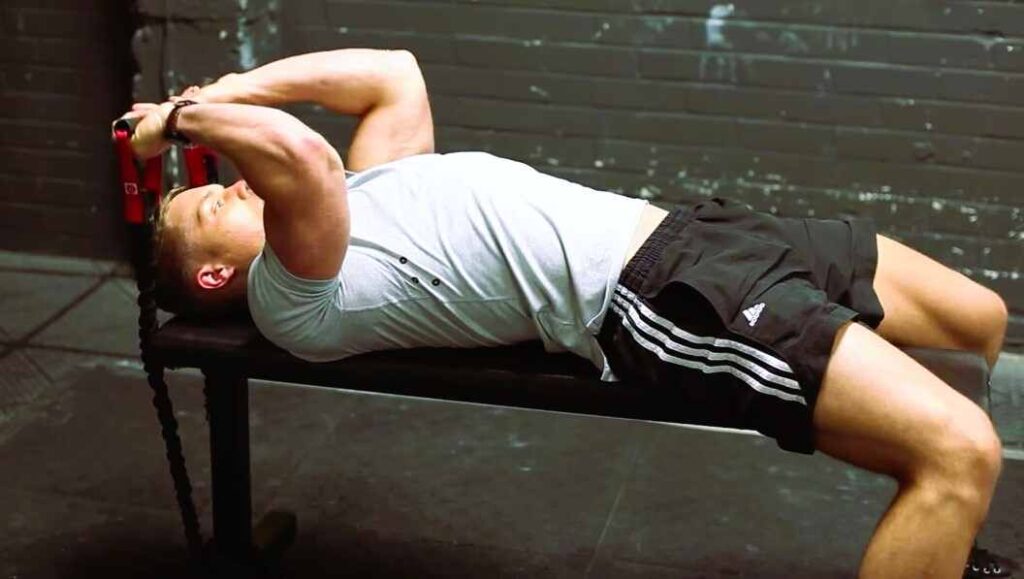
4. Single-Arm Skull Crushers
- When you lie on a bench with a dumbbell in your one hand then arm extend the arm vertically.
- Bend your elbow and lower the dumbbell towards your forehead.
- Extend your elbow to return to the starting position.

Make sure to select the variation that does that helps you to achieve your fitness level and goals, and in order to get the maximum benefits from skull crusher exercise, always prioritize proper form and control.
Difference between Overhead Triceps Extensions and Skull Crushers
The below table provides a detailed comparison of the Skull Crushers and Overhead Triceps Extension, highlighting their key differences in terms of name, purpose, difficulty level, body position, and targeted muscles.
| Aspect | Overhead Triceps Extensions | Skull Crushers |
| Name | Overhead Triceps Extensions (or Dumbbell Triceps Extension) | Skull Crushers (or Lying Triceps Extensions) |
| Definitions | An isolation exercise primarily targeting the triceps muscles located in the back of the upper arm. | Effective for building triceps strength and size, focusing on the triceps muscle group in the upper arm. |
| Difficulty Level | Moderate difficulty, involving extending dumbbells above the head while lying on a bench. | More challenging due to the weight load placed on arms and shoulders, demanding greater strength and stability. |
| Body Position | Performed while lying on a bench with arms extending the dumbbells above the head. | Executed by lying on a flat bench and lifting the dumbbells from behind the head to full extension above you. |
| Muscles Targeted | Primarily targets the triceps muscle group in the upper arm. | Also focuses on the triceps muscle group in the upper arm, effectively building triceps strength and size. |
Tips to Maximize the Results
Determining Sets, Reps, and Rest Periods
- For better growth of the muscle perform 3 to 4 sets of 8 to 12 repetitions
- It is important to take almost 1 to 2 minute minutes to ensure a satisfactory recovery.
Frequency and Progression Strategies
- Depending on your overall work routine, you can use the skull crushers 1 to 3 times per week to train your triceps.
- Either you can increase the weight or you can increase the number of reps to challenge your muscles and to promote the continuous growth of triceps.
Incorporating Barbell Curls into a Comprehensive Arm Training Routine
- You can include barbell curls with skull crushers for a balanced workout.
- Both of these exercises mainly target the triceps and biceps and enhance the growth of overall muscle development.
Sample Workout Plans for Different Fitness Levels
Beginner:
- Sets: 3
- Reps: 10-12
- Rest: 1-2 minutes between sets
Intermediate:
- Sets: 4
- Reps: 8-10
- Rest: 1-2 minutes between sets
Advanced:
Exercise 1: Skull Crushers (Superset)
- Sets: 4
- Reps: 8-10
Exercise 2: Barbell Curls
- Sets: 4
- Reps: 8-10
- Rest: 1-2 minutes between sets and exercises
You can adjust the weight as per your strength and intensity to achieve the fitness goals and levels. To ensure a safe and effective workout it is important to focus on the proper form and gradual progression.
Conclusion
The skull crusher is an important exercise of that provides a targeted and effective path to strengthen the triceps muscles. It also improves the triceps definition and contributes to a balanced, powerful physique. Mastering this exercise may take time but always remember to keep the safety and proper form at the forefront of the workout, as it will help you to move towards the step to achieve your fitness goal. Stay motivated, keep pushing your limits, and take your triceps and overall upper-body strength to the next level. So, wake up challenge yourself, and remember to be consistent, as we know that slow and steady wins the race.
Frequently Asked Questions
EZ Bar Skull Crushers FAQs
| Question | Answer |
|---|---|
| How to do EZ Bar Skull Crushers properly? | To perform EZ Bar Skull Crushers correctly, select your desired weight, sit on a flat bench, lay back, keep the bar close to your chest, and lower the weights towards your head. Source: Muscle and Strength |
| Should you use EZ bar for Skull Crushers? | Yes, the recommended way is to use an EZ bar for Skull Crushers. Source: r/gainit |
| What do EZ Bar Skull Crushers target? | EZ Bar Skull Crushers primarily target the triceps muscles. Source: Punch Supplements |
| What angle for EZ Bar Skull Crusher? | The proper angle for EZ Bar Skull Crushers is to lie back on a bench with your arms perpendicular to your torso. Source: Men’s Health |
| Is EZ or straight bar better for Skull Crushers? | Using an EZ bar is generally better for Skull Crushers due to its ergonomic design. Source: r/xxfitness |
| Are Skull Crushers better on flat or incline? | Skull Crushers are typically performed on a flat bench for optimal muscle engagement. Source: Elite Physique Training |
Sources
- Muscle and Strength: EZ Bar Skullcrusher: Video Exercise Guide & Tips
- Men’s Health: How to Do the EZ-bar Skull Crusher
- Athlean-X: How To Do Skullcrushers Correctly
- Men’s Health UK: How to do the close grip EZ bar skullcrusher
- BarBend: How to Do Skull Crushers for Larger Triceps
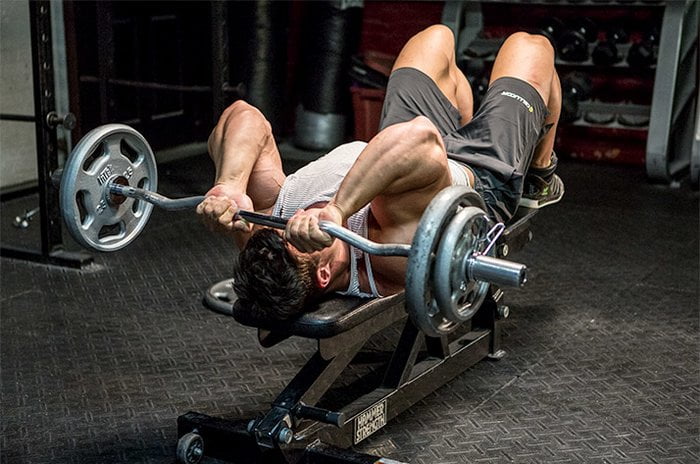


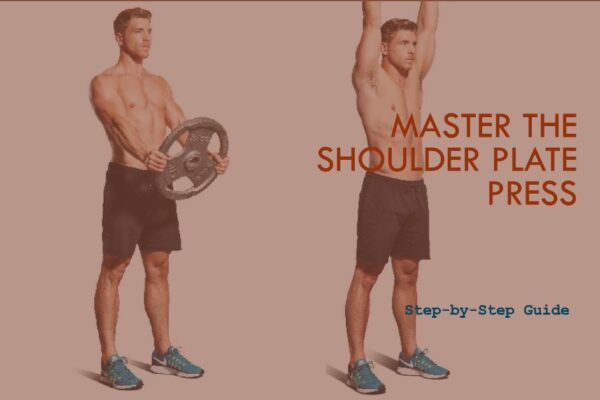
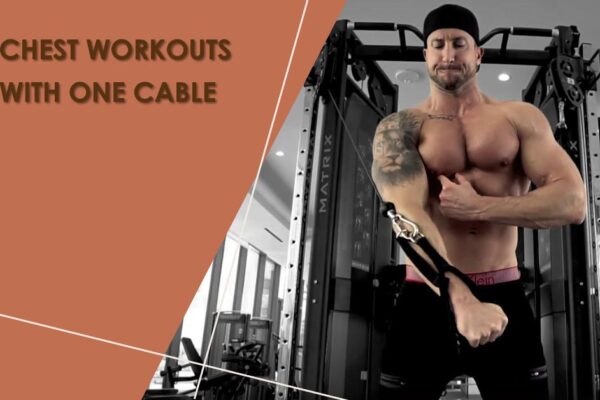
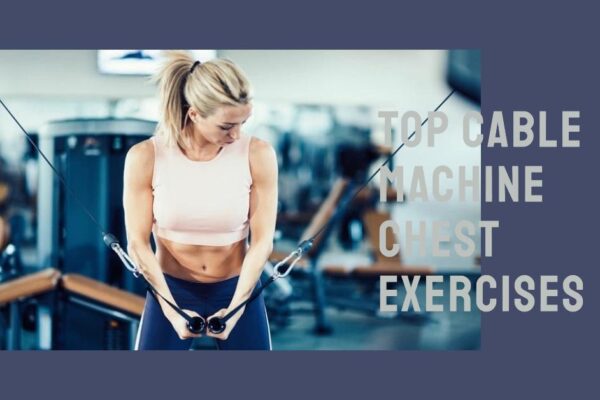
Leave a Reply